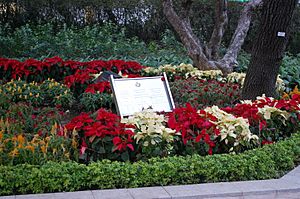Sham Shui Po Barracks facts for kids
Sham Shui Po Barracks was a large military base in Hong Kong. The British Army built it in the 1920s. It was located in the Sham Shui Po area of Kowloon.
The base was surrounded by streets like Fuk Wa Street and Tonkin Street. It had different sections, including Hankow Barracks and Nanking Barracks. There was also a big area for parades. Later, more buildings were added, including large homes for soldiers and their families.
Sham Shui Po During World War II
During World War II, the base was used by the Imperial Japanese Army. They turned it into a prison camp for soldiers. These soldiers were called POWs, which stands for Prisoners of War.
Many British, Indian, and Canadian soldiers were held here. This camp was the main POW camp in Hong Kong. It was used from before the Battle of Hong Kong until Japan surrendered. Many POWs sadly died at the camp. A serious illness called diphtheria caused many deaths in 1942. All POWs sent from Hong Kong to Japan left from a pier near Sham Shui Po.
What Happened After the War
After the war, the military gave some land from the base to the Hong Kong government in 1959. This land was used to make Lai Chi Kok Road longer.
In the late 1970s and early 1980s, the camp was used again. This time, it housed Vietnamese refugees. These were people who had to leave their homes in Vietnam.
The old camp area was redeveloped in the early 1990s. New homes were built there. None of the original military buildings are left today. However, you can still find special plaques that remember the POW camp. There are also maple trees planted to remember the Canadian soldiers held there. These memorials are in Sham Shui Po Park, which is also part of the former base.
See also
- Dragon Centre
- Lindsay Tasman Ride


